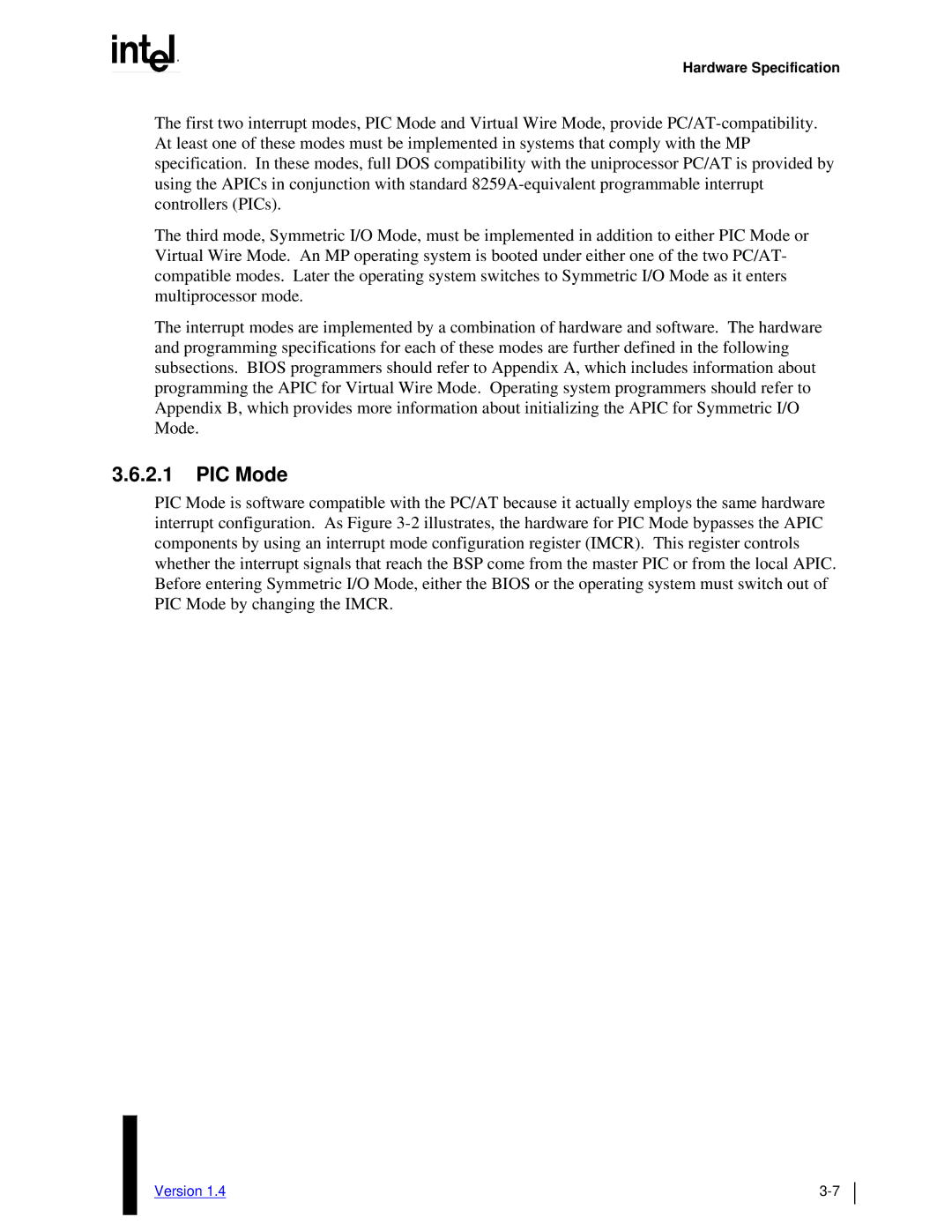
Hardware Specification
The first two interrupt modes, PIC Mode and Virtual Wire Mode, provide
The third mode, Symmetric I/O Mode, must be implemented in addition to either PIC Mode or Virtual Wire Mode. An MP operating system is booted under either one of the two PC/AT- compatible modes. Later the operating system switches to Symmetric I/O Mode as it enters multiprocessor mode.
The interrupt modes are implemented by a combination of hardware and software. The hardware and programming specifications for each of these modes are further defined in the following subsections. BIOS programmers should refer to Appendix A, which includes information about programming the APIC for Virtual Wire Mode. Operating system programmers should refer to Appendix B, which provides more information about initializing the APIC for Symmetric I/O Mode.
3.6.2.1PIC Mode
PIC Mode is software compatible with the PC/AT because it actually employs the same hardware interrupt configuration. As Figure
Version 1.4 |
